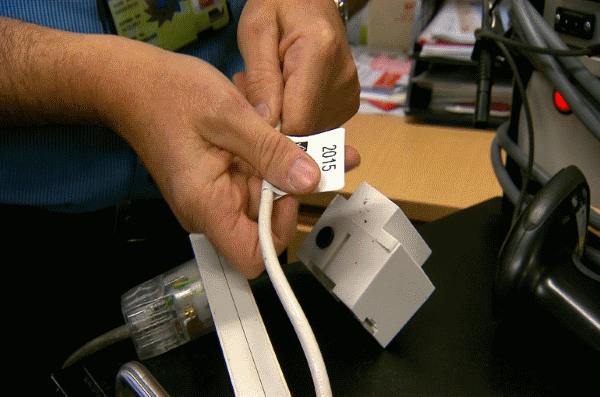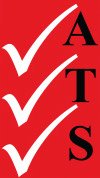Electricity: The invisible threat to workplace safety

Testing and tagging is one element of electrical safety that has caused confusion and controversy since its inception. Many people believe it to be an important part of a comprehensive electrical safety management system, some people believe it to be a waste of time and simply an additional cost to businesses across Australia, and then there are those that believe it to be important only in a construction environment. But, the fact remains that, even in a non-construction environment, up to 10 percent of appliances fail first round testing and many of these appliances have the potential to kill.
The standard that applies in this area – AS/NZS 3760:2010 In-Service Safety Inspection and Testing of Electrical Equipment – specifies the safety inspection and maintenance standards for Australia and New Zealand, and can assist in complying with WHS legislation.
It is vital to remember that the standard should be read in conjunction with both national and state specific legislation as testing and retesting requirements detailed in legislation will still vary from state to state.
Many people have been caught out with a ‘one-size-fits-all’ approach to testing and tagging. For example, the equipment used in a workshop of a manufacturing facility should be tested on a six-monthly basis, and unscrupulous test and tag providers have been known to test the entire facility on a six-monthly basis. It’s no wonder some businesses believe it is simply an add-on cost!
With the introduction of the new model Work Health and Safety Acts (WHS), Safe Work Australia has attempted to clear up some of the confusion surrounding testing and tagging. These regulations are far more prescribed and state all appliances located in a hostile operating environment must be inspected, tested and tagged regularly by a competent person and a record maintained of the testing. All items not located in these environments should be the subject of a documented risk assessment, which may in fact recommend the testing and tagging of the appliance.
A hostile environment is one that is exposed to heat, dust, moisture, corrosion, abrasion or vibration. This includes kitchens, tearooms, poorly designed workstations with leads on the floor, training rooms and laptops, along with all manufacturing environments.
With regards to RCD (safety switch testing), the model WHS regulations state that all circuits operating in a hostile environment must be protected by an RCD. That RCD must then be tested 12 monthly in accordance with the Australian standard.
WHO’S RESPONSIBLE FOR TESTING AND TAGGING?
The new standard makes specific references to the responsibilities of ‘the responsible person’ to ensure the competency of technicians undertaking a test and tag program. The responsible person is the owner of the premises, equipment or, under model WHS regulations, the PCBU (person conducting a business or undertaking) or officer deemed to be responsible for the safety of the workplace.
One of the most important areas of competency is the understanding of the standard. We encourage all ‘responsible persons’ to ensure their test and tag provider owns a current copy of the standard and understands the changes.
It is also worth checking that the test and tag provider holds both public liability and professional indemnity insurances.
All appliances located in a hostile operating environment – which includes kitchens, tearooms, poorly designed workstations, training rooms, laptops and all manufacturing environments – must be inspected, tested and tagged regularly.
NEW RETESTING TIMEFRAMES
When the newly revised standard AS/NZS 3760:2010 was launched in Australia in October 2010, it contained a number of modifications on the previous standard. In order to reduce confusion within manufacturing environments, there are no longer different retesting time-frames for Class I and Class II equipment. Therefore, all portable electrical equipment located in a manufacturing environment is now subject to retesting every six months.
Portable RCDs used in commercial cleaning are now required to be tested by the ‘push button’ daily or prior to use (whichever is longer) and an operating time test must be conducted every 12 months.
It is important to note that as the Queensland Electrical Safety Regulations specify retesting timeframes based on Classes of Work, in Queensland the Queensland Electrical Safety Regulations should be referred to for retesting time-frames.
Concerning equipment supplied by a cord set, the cord set and the equipment must now be tested and tagged separately. For example, a kettle with a removable IEC (International Electrotechnical Commission) lead would consist of two tests. One test for the kettle, with a tag applied to the kettle, and one test for the IEC lead, with the tag applied to the plug end of the IEC lead.
INFORMATION REQUIRED ON TAG
AS/NZS 3760:2010 specifies that the retest date must be added to the durable, non-reusable, non-metallic tag placed on the item after testing. This is in addition to the requirement for technician/company name, test or inspection date and whether the item passed or failed testing. This addition has been made to assist workplaces in easily identifying when their appliances are due for retesting.
In addition, all new items being introduced to service must be tagged with a New to Service tag. Apart from stating the item is New to Service, it must also state the date of entry to service, the date it will be tested and that “this appliance has not been tested in accordance with AS/NZS 3760”.
LEASED EQUIPMENT NOW INCLUDED
In the 2003 standard, reference was made to hired equipment, but not to the requirements for the testing and tagging of leased equipment. AS/NZS 3760:2010 now states that the hiree or the lessee is responsible for the inspection testing, and tagging of hired and leased equipment while the equipment is in their possession. Traditionally leased appliances, such as vending machines, water coolers, computers, photocopiers and the like, should be inspected tested and tagged by the hiree or lessee in accordance with the required retest frequencies while the equipment is in their possession.
TAKING ELECTRIC SHOCK SERIOUSLY
The first step in the test and tag process is for each item to be examined visually for defects and faults, and an appliance is only ever electrically tested after it has passed this visual test. The majority of items fail this visual testing and often the user is horrified that it has been deemed no longer safe to use.
Electricity is not visible and most people have an ‘it won’t happen to me’ attitude when it comes to electric shock. Providing a safe workplace is obligatory, regardless of attitudes and misconceptions about electricity, and the sometimes blatant disregard of the seriousness of an electric shock..
Sarah Allen, ATS, Facility Management Magazine - May 2012

